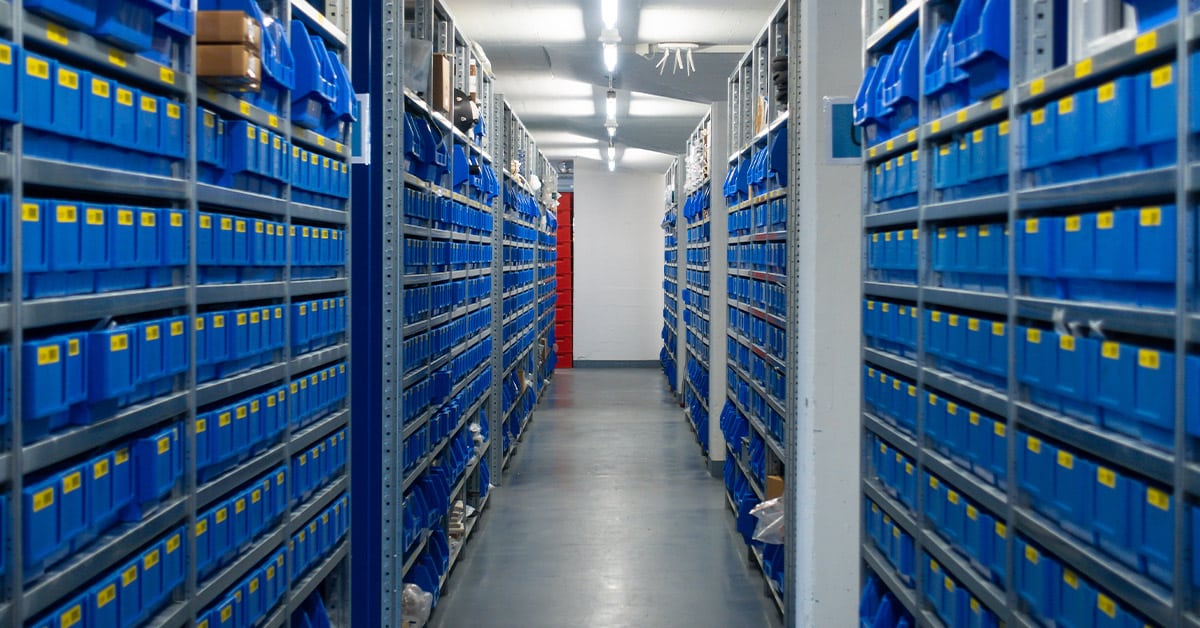When planning and performing maintenance on a piece of industrial machinery, most technicians will say they like to deal directly with the original equipment manufacturer, or OEM. There are often many benefits from doing this, but sometimes it’s not possible or it creates other problems.
Anyone wrestling with whether they should deal with the OEM or explore alternative options should read further. This blog covers who OEMs are, their responsibilities and the benefits of using OEMs versus aftermarket replacement parts.
What is an original equipment manufacturer (OEM)?
The stock answer is to say that the OEM is the company that built the equipment or machine in question. With complex modern systems, however, the reality is a little more complex.
Take a packaging line as an example. This will be built by a specialist company who probably also handles integration and installation and may offer maintenance services. Where things get complicated is that the builder will have purchased many of the components used. The Programmable Logic Controller (PLC) will have been sourced from a PLC manufacturer, the motors and drives from motor manufacturers and so on. While there’s an OEM for the packaging line, many of the parts and systems in that line have their own OEMs.
For both the line and individual original manufacturer parts, OEMs are the prime source of knowledge and information regarding the equipment they made. They handle the design, development and manufacturing, they know the specifications and limitations and they can provide documentation and warranties.
OEM vs. aftermarket
If you’re sourcing replacement parts for a machine, only in the case of custom-made parts, such as grippers or mounts, is it essential to go back to the company that built them. For most other parts, you could go to the OEMs (usually indicated by labels on the components or perhaps called out in a parts list provided by the machine OEM), or there may be aftermarket alternatives.
Aftermarket parts are those made nominally to same specifications as the OEM parts. You might consider them copies, although it’s possible they’re just made to industry standards.
Two situations for considering aftermarket parts are when you need to save money (because they are usually cheaper) and when the OEM parts are not available. If the OEM is out of business, there may be no alternative than going to aftermarket vendors.
Aftermarket companies can sell their products at lower prices because they don’t incur the research and development (R&D) costs of the OEM. However, a question of vital importance to those working in industrial maintenance is will aftermarket parts perform as well as the original manufacturer parts?
Importance of OEM parts in industrial maintenance
Maintenance is a key part of industrial asset management. By reducing unplanned downtime and prolonging asset life, it lowers overall costs. However, maintenance costs, including expenditure on replacement parts, are always kept under review as part of managing the MRO parts budget. Three other important considerations are:
- Quality and reliability: OEMs perform R&D to ensure their products perform exactly as required. They are also very invested in product quality because their products carry their names, and they don’t want to risk any damage to their reputation. Likewise, they also strive to be dependable in terms of carrying inventory and supplying parts quickly when needed.
- Compatibility and precision: Machine OEMs build their equipment around components from manufacturers they know and trust. This ensures OEM components, manufactured to the same tolerances on the same production lines as the original parts, will be direct replacements for what was installed during build. Likewise, they will perform exactly as the original parts. Aftermarket parts may look and feel like their OEM equivalents, but there may be differences. Materials and processing methods are unlikely to be identical to those of the OEM parts. (Take seals as an example: It can be very hard to know if seals from two manufacturers are made from the same material.) Consequently, even if aftermarket parts fit, they may not perform as well as the original manufacturer parts. This can mean shorter life, more breakdowns and higher maintenance costs.
- Warranty and support: Original equipment manufacturers stand behind their products with warranties and technical support. They can do this because they conducted the initial engineering and have the relevant knowledge and intellectual property. Purchasing OEM parts provides access to these services, which can save time during installation and ensures durability through correct mounting and use of preferred materials. It also means that, should problems be encountered, help is available for rapid resolution.
Roles and responsibilities of OEMs in manufacturing
OEMs perform the initial design and engineering, and they manufacture the parts and equipment they put their names on.
Design and engineering involve more than just creating drawings to manufacture from. Experience with previous generations of products is combined with field data to select optimal tolerances and materials. Innovative solutions are developed to meet new customer requirements and prototypes are assembled and tested.
Manufacturing processes are developed and optimized to produce the characteristics, performance and durability needed. Testing during development informs quality and inspection procedures that are implemented in production to ensure everything shipped to customers fully meets expectations.
Challenges faced by OEMs
If developing and launching high quality products wasn’t hard enough, OEMs in manufacturing operate in highly competitive and demanding environments. For most, their top three challenges are:
- Global competition: Not only do aftermarket producers seek to drive prices down by manufacturing in low-cost countries, but some are located in places where intellectual property protections are limited.
- Supply chain disruptions: OEMs tend to manufacture in a single location and distribute globally, often through resellers. This exposes them to supply chain risks and disruptions that must be managed carefully.
- Regulatory compliance: OEM products must adhere to industry regulations and standards while at the same time complying with the requirements of all the countries in which they wish to do business. However, for purchasers of OEM parts this provides assurance that they will be safe to use.
Support for all your maintenance challenges
Spare parts are essential for timely maintenance, whether breakdown or preventive, but pressure to reduce inventories can prompt buyers to look at aftermarket sources. It’s often hard to tell if these will perform the same as OEM parts, and sometimes they can cause higher levels of breakdowns and increased maintenance costs.
As leaders in industrial maintenance, ATS helps manufacturers with all aspects of MRO parts management. This extends from locating obsolete parts for older and discontinued machinery, to reviewing and sharing OEM partnership benefits. If you’re looking for help to improve maintenance effectiveness, reduce downtime and improve cost management, ATS has the skills and experience you need. Contact us to learn more.






